Out there in the web, there is little information about the performance of the different Canon FD 35mm lenses and that is of varying quality. Since I was wondering, which of the nFD versions is optically the best I ran an extensive comparison and compared them in the most relevant categories.
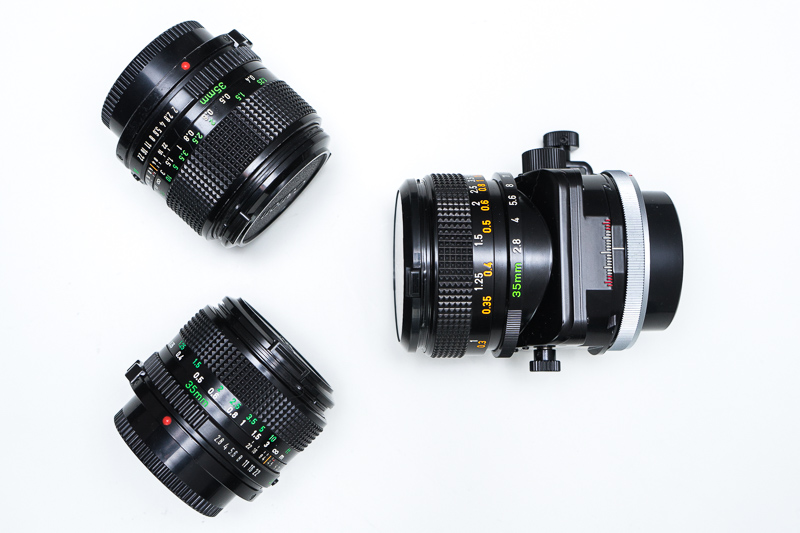
Versions
I’ll start that comparison with a closer look at the FD 35mm lens family because otherwise this can be a bit confusing. There are at least six different 35mm lenses for Canon FD:
- Canon FD 35mm f/2.0 S.S.C. Optical Design I: Uses radioactive thoriated elements and has a concave front element. Serial Number 10001-99999
- Canon FD 35mm f/2.0 S.S.C. Optical Design II: Doesn’t use thoriated elements, convex front element, Serial number >100000
- Canon FD 35mm f/3.5 S.C. Precedessor of the nFD 2.8/35mm
- Canon nFD 35mm f/2.0: much smaller and lighter than the FD 35mm lenses
- Canon nFD 35mm f/2.8: Only avialable in new FD mount
- Canon FD 35mm f/2.8 TS (Tilt-Shift): Avialable in FD and new FD mount
This comparison is about the new FD 35mm f/2.8 (In-depth review), new FD 35mm f/2.0 and the FD TS 35mm f/2.8 S.S.C. I treat the FD TS 35mm f/2.8 S.S.C as a normal lens and do not analyze it’s tilt-shift functionality.
Specifications
| Lens | Canon nFD 2.8/35 | Canon nFD 2.0/35 | Canon FD TS 2.8/35 S.S.C. |
|---|---|---|---|
| Diameter | 63 | 63 | 67mm |
| Length | 40 | 46 | 74,5mm |
| Weight | 165g | 245g | 550g |
| Filter Diameter | 52mm | 52mm | 58mm |
| Number of Aperture Blades | 5 | 8 | 8 |
| Elements/Groups | 6/5 | 10/8 | 9/8 |
| Floating Elements | no | yes | yes |
| Close Focusing Distance: | 35cm | 30cm | 30cm |
The difference in size and weight between the lenses shows dramatically on the spec sheet. The tilt-shift lens is by far the largest and heaviest lens, the difference between the 2.8/35 and the 2.0/35 is not that that big, although apparent.

Mechanical Quality
The nFD 2.8/35 shows the normal nFD-build quality. Compared to Contax or Olympus lenses, the build quality is one or two steps behind. Nothing to worry about, but the aperture ring feels a little dull and the used materials are less worthy. The focus ring feels smooth. The positive aspect of that is the very low weight of the nFD lenses.
The nFD 2.0/35 is known for having problems with the bearings. The rubber finish around the bearings is dissolving over the years which leads to varying lens performance and also to degradation in image qualiy. To double-check the results, I bought two samples of the 2.0/35 which showed virtually identical performance. Therefore, I am convinced that the result shows what can be expected when the lens is bought today. It is possible that the performance can be further improved if the bearings get renewed although this means a lot of work.
Many FD lenses with floating Elements (2.0/24, 2.0/28, 2.0/35, nFD 4/200 Macro) are concerned by this phenomenon. I have owned copies of the 2.0/28 and the 4/200 Macro and the corner performance was horrible on both of them. I had I have the impression, that the issue affects . Both copies of the 2.0/35 have play in the focus ring.
Apart from the focus-play-issue, the 2.0/35 feels just like the 2.8/35.
The 2.8/35 TS feels very solid. Mechanically, it is one step ahead of the other two 35mm lenses. The aperture ring feels very well defined and the focusing ring has zero play.
Winner: 2.8/35 TS 2nd: 2.8/35 3rd: 2.0/35
Handling
The Handling of the 2.8/35 and the 2.0/35 is very pleasant due to the light weight and the easy unlock mechanism. Mounting the 2.8/35 TS takes more time (like with all the FD lenses with breechlock) and the lens is much heavier so you think twice about taking it with you. The high weight could be an issue with the plastic bayonet A7/A7R but it didn’t impress the A7II.
The aperture ring of the 2.8/35 and the 2.0/35 has half stops while the aperture ring of the 2.8/35 TS has only full stops. This is a matter of taste – for me, full stops are enough.
Winner: 2.8/35 2nd/3rd: 2.0/35 (play in the focusing ring) / TS 2.8/35 (size and weight)
Vignetting
The nFD 2.0/35 shows significant vignetting wide open, which is reduced a lot by stopping down once. It has the lowest vignetting of the three lenses at f/2.8. The FD TS 2.8/35 comes in at the second place and the nFD 2.8/35 clearly comes last. Stopped down further, the nFD 2.8/35 and 2.0/35 keep a little amount of vignetting while the tilt-shift lens shows almost zero vignetting.
Winners: 2.8/35 TS (stopped down) and 2.0/35 (large apertures) 2nd: 2.0/35

Sharpnes
Close-Up
I didn’t move during this test, all pictures were taken at the distance of 35cm which is the minimum focusing distance of the nFD 2.8/35mm. There are slight differences in the reproduction ratio due to different physical length of the lenses.
The nFD 2.8/35 is clearly the worst lens for close-up work due to the lack of floating elements and the longer minimum focusing distance. This is clearly visible in the crops below, the lens is much softer wide open then at f/5.6.
The nFD 2.0/35 and the FD TS 2.8/35 feature floating elements, therefore I expected them to perform better than the nFD 2.8/35. Especially the 2.0/35mm shows great resolution at f/2.8, the result is very close to the crop at f/5.6. The FD TS 2.8/35 performs much better than the 2.8/35 but slightly worse than the 2.0/35.
Winner: 2.0/35 2nd: 2.8/35 TS 3rd: 2.8/35
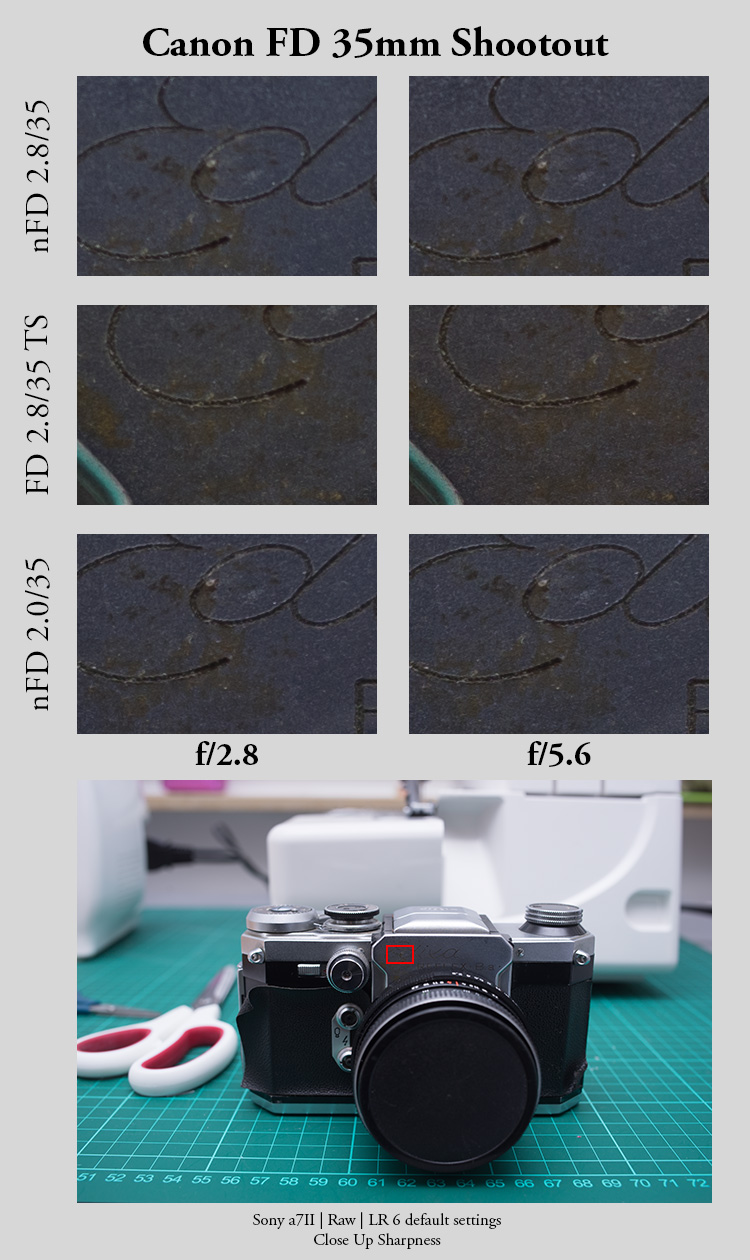
Sharpness: Infinity
For this comparison, I created three sharpness charts to analyze the sharpness characteristics. The content of the crop may vary due to slight variation in effective focal length of the lenses and slight tripod movement when changing the lenses. This does not affect comparability.
Center
All lenses show decent center perfomance from f/2.8. The nFD 2.8/35 and the 2.8/35 TS show higher microcontrast than the 2.0/35. The 2.8/35 TS seems to be slighty less sharp than the 2.8/35 and the 2.0/35.
Winner: 2.8/35 2nd: 2.0/35 3rd: 2.8/35 TS

Midframe
In the midframe, results start to differ. The 2.8/35 shows good sharpness even at f/2.8 which slightly increases at f/4. The 2.0/35 comes second place and catches up to the 2.8/35 at f/5.6. The Tilt Shift lens shows some lateral CA at all apertures. This decreases the sharpness impression at fine structures. The midframe sharpness of the 2.8/35 TS peaks at f/8.
Winner: 2.8/35 2nd: 2.0/35 3rd: 2.8/35 TS
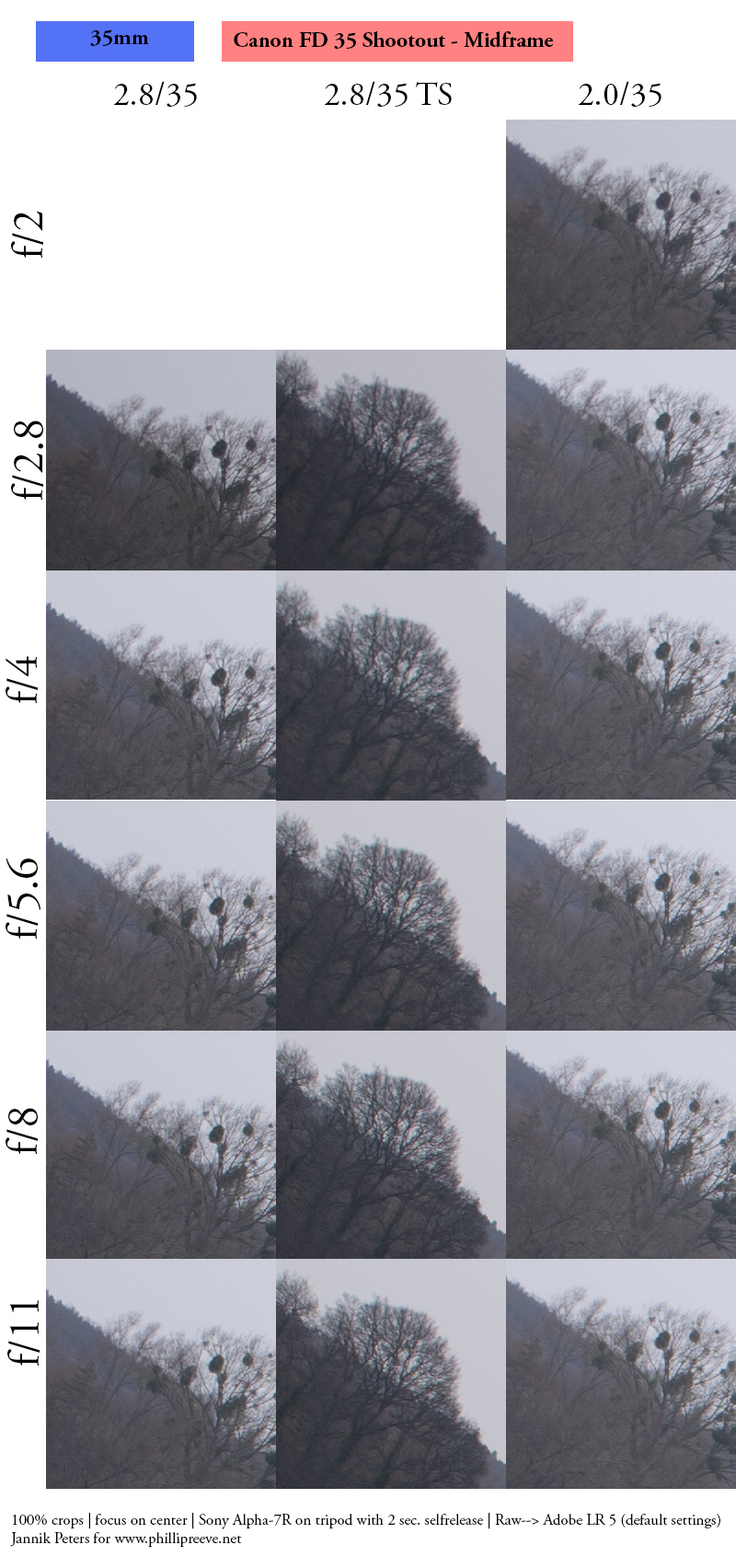
Corner
Let’s start again with the winner here: The 2.8/35! The corners are very sharp at f/5.6 and peak at f/8. After that, diffraction gets visible. The corner performance of the 2.0/35 seems to be one stop behind the f/2.8 at all apertures. The 2.8/35 TS looks not very good in the extreme corners. The only aperture where I would consider it to be sufficiently sharp is f/11.
Winner: 2.8/35 2nd: 2.0/35 3rd: 2.8/35 TS
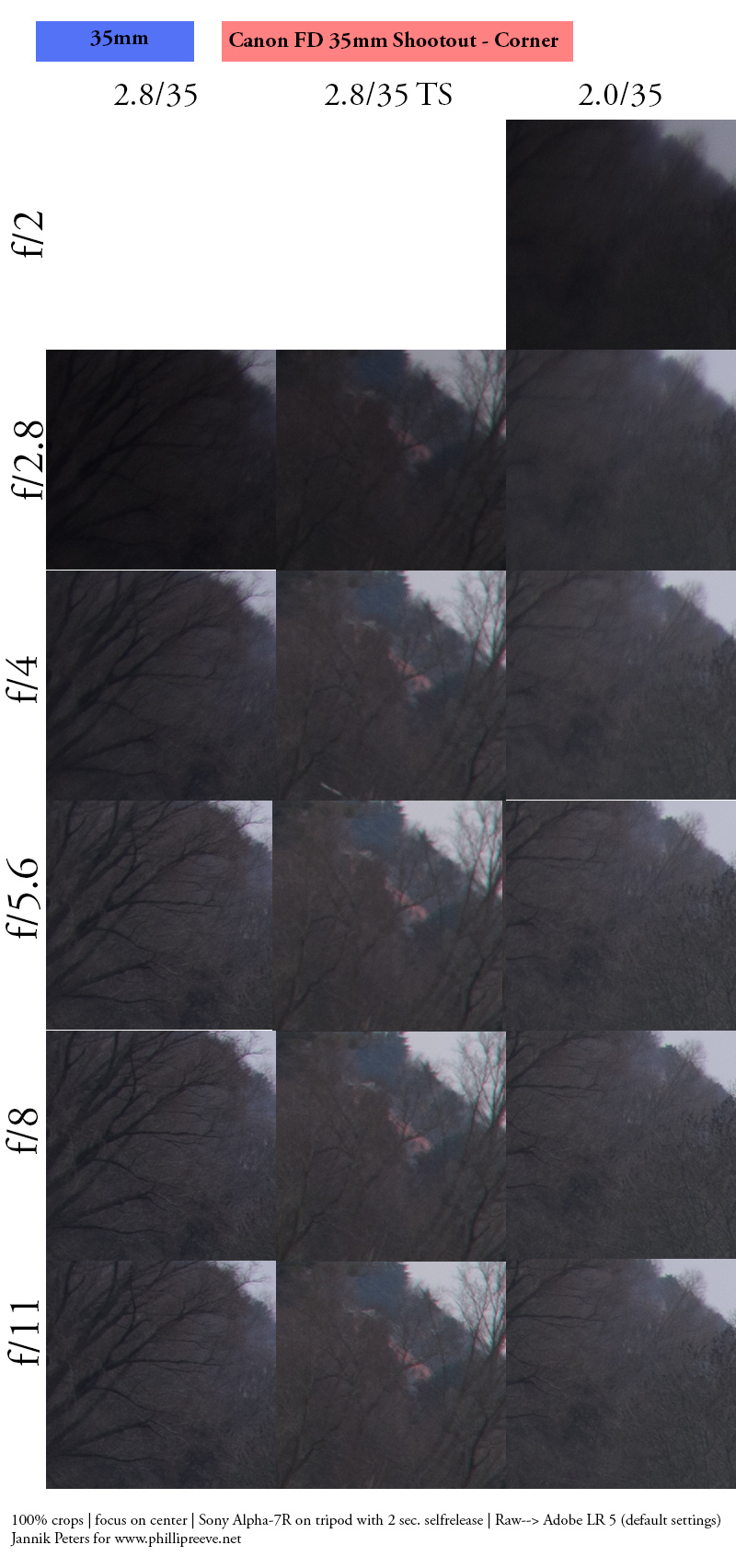
Sharpness – Verdict
The nFD 2.0/35mm shows a very balanced performance between very good close-up and infinity sharpness. For pure landscape (edge to edge sharpness) work, the nFD 2.8/35mm performs slightly better and is more contrasty. The FD 2.8/35 TS shows decent close up performance but lags behind the other two 35mm lenses in terms of edge sharpness at infinity.
Distortion
Analysis
First, look at the uncorrected images:
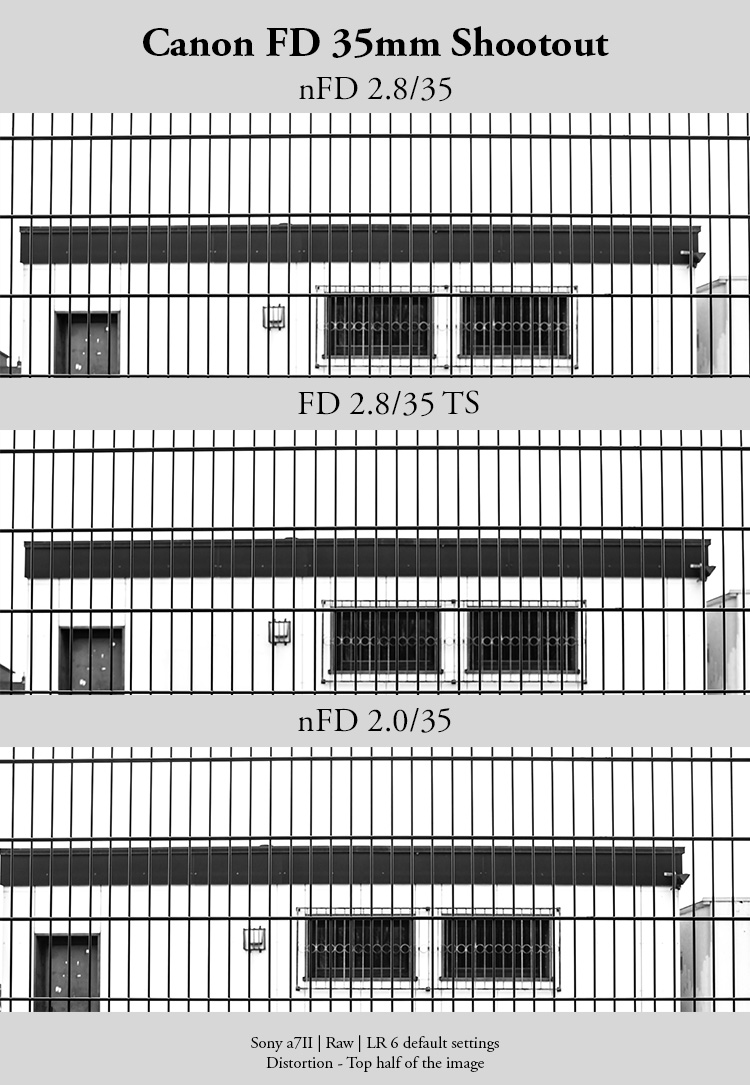
Canon nFD 2.8/35mm – moderate linear barrel distortion. LR-Correction +5
Canon FD TS 2.8/35mm – low barrel distortion with a slight mustache style sub-frequency. LR-Correction +3 seems to be the best compromise between borders and center although a dedicated lens profile would be needed for architecture photography.
Canon nFD 2.0/35mm – low barrel distortion with a mustache style sub-frequency. LR-Correction +3 seems to be the best compromise between borders and center although a dedicated lens profile would be needed for architecture photography.
Winner: 2.8/35 2nd: 2.8/35 TS 3rd: 2.0/35
Distortion – Verdict
Distortion of all three lenses is pleasantly low. The nFD 2.8/35 distorts the most in absolute terms but the type of distortion is easy to correct, so this is nothing to worry about.
The FD TS 2.8/35mm and the 2.0/35mm show barrel distortion too but less pronounced. Unfortunately, it is paired with a slight mustache style sub-frequency. It is not dramatic and not as strong as with ultra wide angles (Zeiss Z/Loxia 2.8/21mm / Samyang 2.8/14mm) but it is visible when the image consists of straight lines and you try to correct it. I would prefer the 2.8/35mm for architecture work where tilting and shifting is not needed.
Bokeh
The weather in Germany is pretty dull this winter, therefore the samples are not as nice as usual. I took three different scenes to help you with your evaluation. I corrected vignetting sometimes to make the comparison easier. Please take into account that the 2.8/35 TS is physically longer and has
Before I draw my conclusion – look at the samples by yourself and judge by what you see:
Scene I – Close up, dark background
nFD 2.8/35 – f/2.8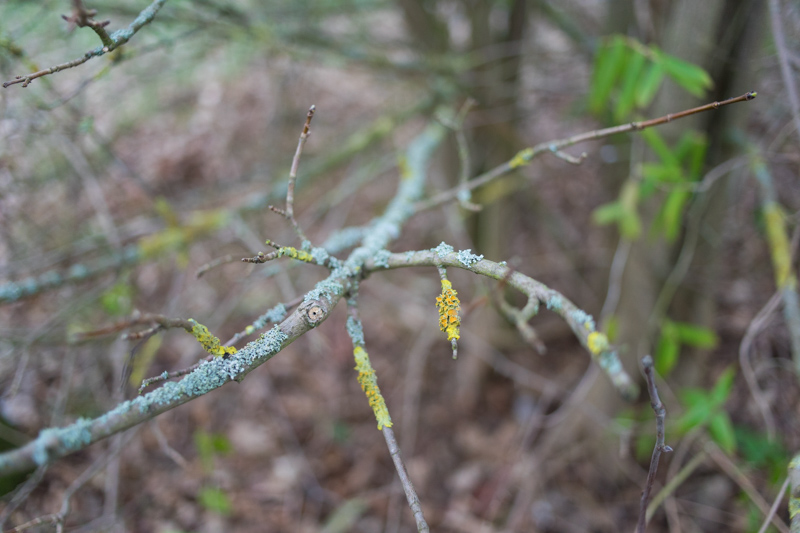
FD TS 2.8/35 – f/2.8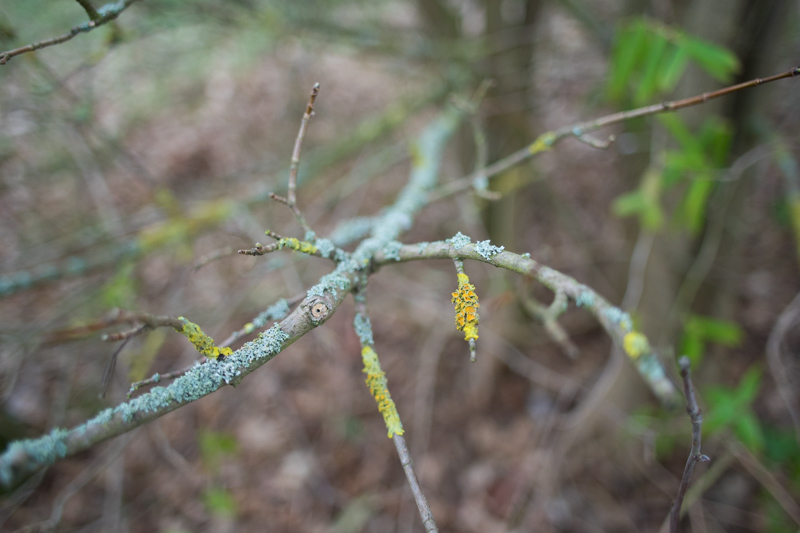
FD 2.0/35 – f/2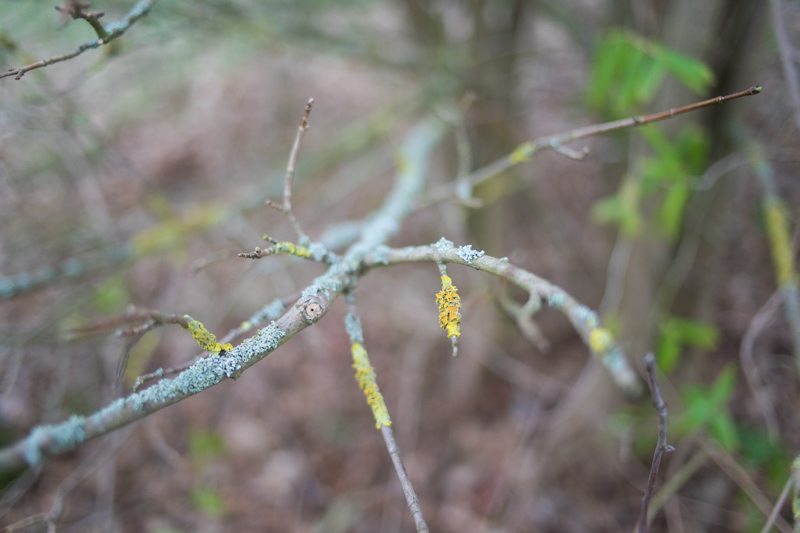
nFD 2.0/35 – f/2.8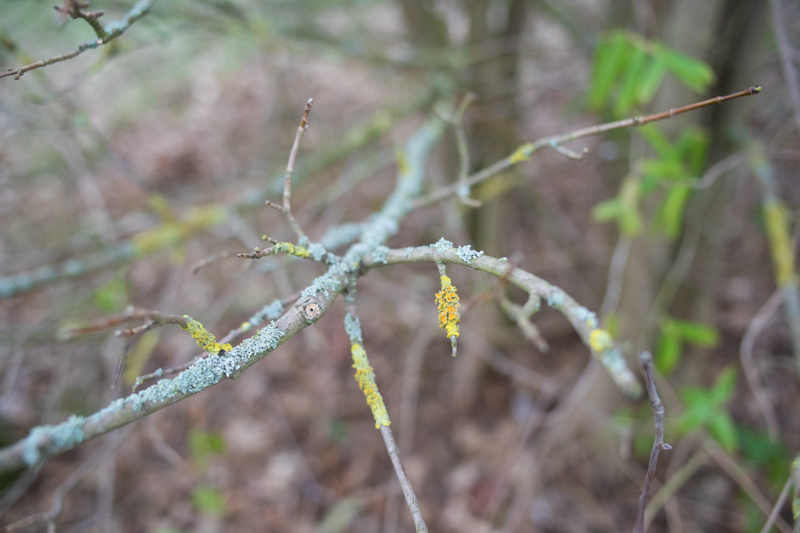
Scene II – Close up, bright background
nFD 2.8/35 – f/2.8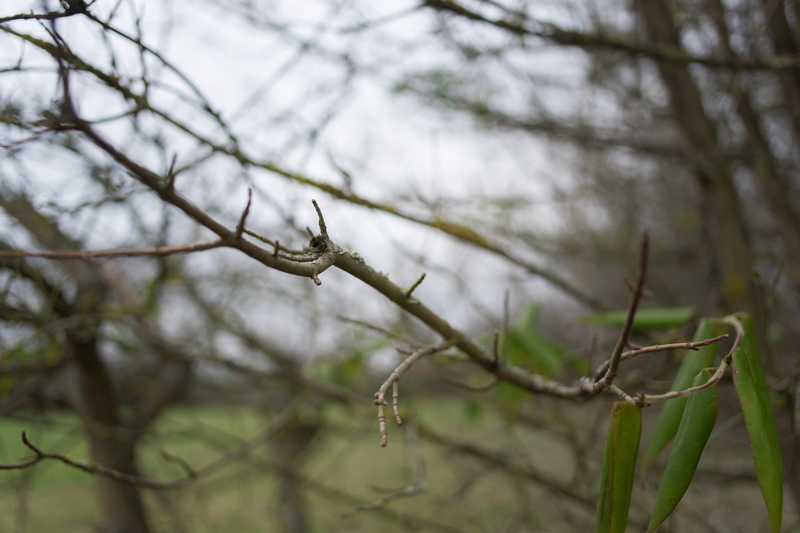
FD TS 2.8/35 – f/2.8 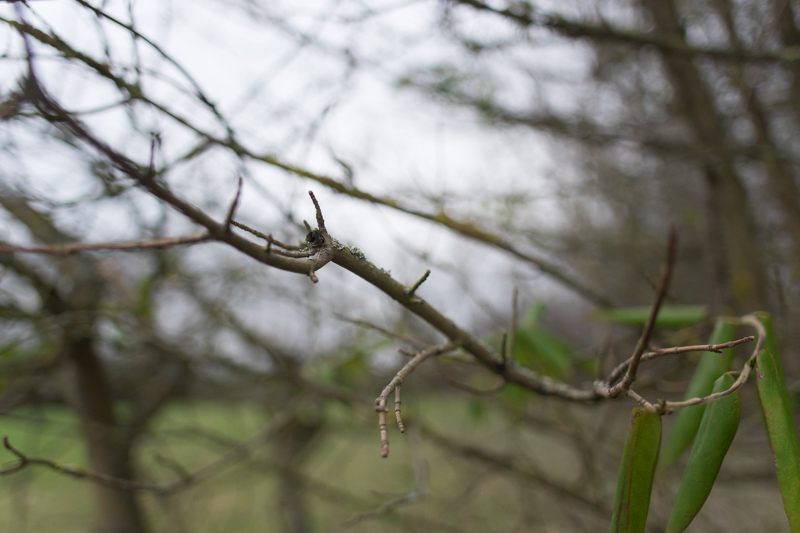
FD 2.0/35 – f/2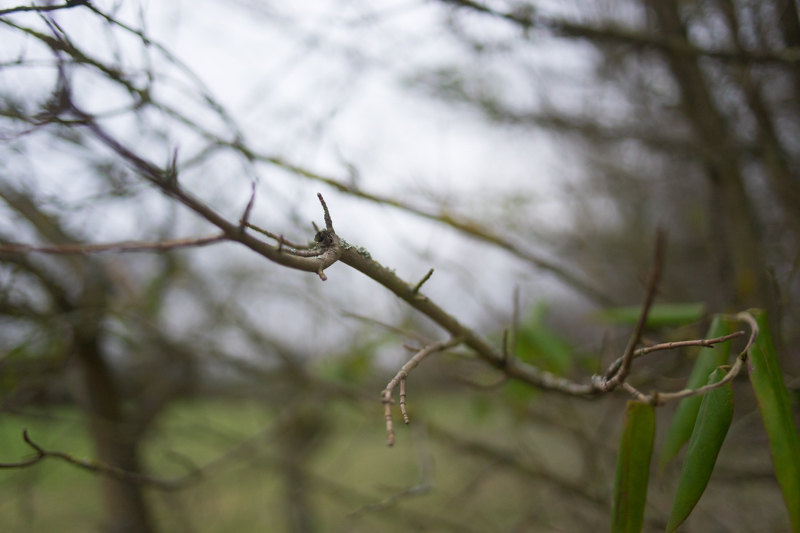
nFD 2.0/35 – f/2.8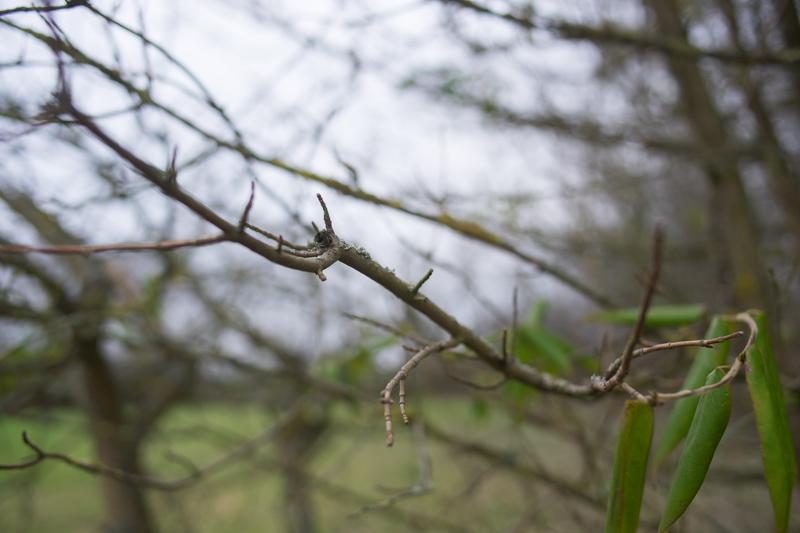
Scene II – Mid distance – Difference between f/2 and f/2.8
nFD 2.8/35 – f/2.8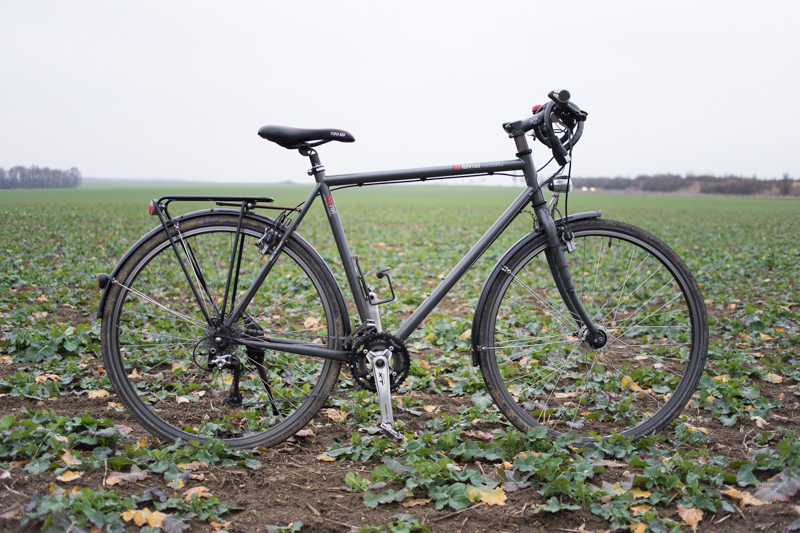
FD 2.0/35 – f/2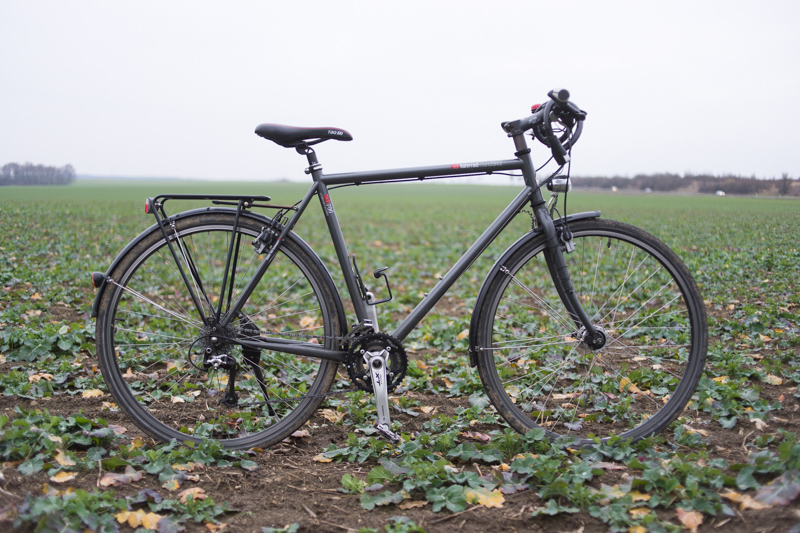
Bokeh – Verdict
To my mind, the 2.0/35 is the clear winner when it comes to bokeh. It does not only have the biggest potential for subject isolation but also the smoothest and most beautiful rendering style – even at f/2.8. Especially the nFD 2.8/35 lags behind the nFD 2.0/35 when it comes to bokeh.
The additional three aperture blades (5 vs. 8) of the nFD 2.0/35 and the FD TS 2.8/35 help to keep the bokeh highlights more round when the lenses get stopped down although I didn’t compare that here.
The evaluation of the TS 2.8/35 could be slightly distracted by the longer focal length and the longer physical length (results in lower depth of field) but it’s bokeh looks more pleasant than the Bokeh of the 2.8/35.
All three lenses show some spherochromatism towards the edges when there are bright highlights.
If you look at the bike image, the difference between f/2.0 and f/2.8 is still visible but not as dramatic as with close up images.
Winner: 2.0/35 2nd: 2.8/35 TS 3rd: 2.8/35
Conclusion
Head-to-head comparisons like these are always much more work than conventional reviews. I guess that is the reason why they are not made that often. I had the impression that a direct comparison of the Canon FD 35mm lenses is still missing and that everybody recommends a different lens. This review really surprised me
Although I didn’t analyze every aspect of the lenses, the recommendation is already pretty easy and also a bit surprising.
Get the nFD 2.8/35 when:
- You want an edge to edge sharp and contrasty landscape lens
- You are looking for the smallest and lightest 35mm FD lens
Get the FD 2.8/35 TS when:
- You want a tilt shift lens and a collectors item. Period.
Get the nFD 2.0/35 when:
- You want one 35mm lens which performs decent in all situations
- You want to do 35mm portrait work with decent bokeh
- You like 35mm close-up photography
Once more, the most expensive option isn’t automatically the best one, it really depends on your needs here.
The nFD 2.8/35 was the surprising winner of the infinity sharpness comparison and rendered the images very clean and contrasty. If you are a landscaper and look for a very small and light but sharp 35mm lens, I highly recommend it. If you look for a general purpose 35mm lens, it stops to shine that bright.
The 2.0/35mm is nearly as sharp as the nFD 2.8/35 at infinity distances but shows lower contrast. Apart of that, the close-up performance, the speed and the bokeh are the strength of the lens and it would be my favorite walkaround lens (out of these three) when I don’t know what I’m going to shoot. The complex distortion needs a dedicated correction profile, therefore this lens is not the first choice for architecture photographers.
One thing to keep in mind when buying the 2.0/35 is that it will probably have some play in the focus ring. If you can live with that and look for a decent allround 35mm legacy lens, this is the one to go.
The 2.8/35 TS lens was one of the earlier lenses of it’s type. Maybe that’s the reason that there are obvious weaknesses when it comes to edge sharpness although it isn’t completely bad. To be honest, I expected it to perform better because tilt-shift lenses have to cover a larger image circle than normal lenses. It has some of the nFD 2.0/35 flavor (8 aperture blades, floating elements, decent bokeh + close up performance) mixed in but falls behind in comparison with it’s non-tilt-shift cousin. One thing to keep in mind is that the focal length is slighty longer compared to the other two 35mm lenses. I guess, it is more a 38-40mm lens in reality. The color renderition is warmer and slightly more greenish than the nFD lenses. All these aspects should not keep you away from buying this lens. With it’s tilt-shift functionality, it is unique in the Canon FD system. 35mm tilt-shift lenses are rare on the market and if this is your favored focal length, it is one of the only options you have. Lastly, don’t forget that you can do awesome and creative things with tilt shift lenses that do not neccesary require optical perfection.
When it comes to the financial aspect, the 2.8/35 is the real steal. I bought it for 25€. When I compare it to the 20 times more expensive 2.8/35 TS (around 500€), the price performance ratio is nothing short of stunning. The nFD 2.0/35 is still pretty cheap when you take it’s good allround performance into account.
One last note – you probably see that this comparison has become pretty long. I hope you understand that I could not cover every single aspect of lens performance here. What’s your favorite? Let us know in the comments!
- The nFD 2.8/35mm usually sells for 35$-100$ at Ebay.com and for 35€ and 90€ at Ebay.de.
- The FD 2.8/35 Tilt Shift sells for 450$-700$ at Ebay.com and for 400€-700€ at Ebay.de.
- The nFD 2.0/35 sells for 80$-150$ at Ebay.com and for 100€-170€ at Ebay.de.
Further Reading
This site contains affiliate links. If you make a purchase using any of the links marked as affiliate links, I may receive a small commission at no additional cost to you. This helps support the creation of future content.
Jannik Peters
Latest posts by Jannik Peters (see all)
- A beginner’s guide to bird photography – Episode 1: Sharpening your senses - August 3, 2021
- Review: Tamron 35mm F/2.8 Di III OSD M1:2 - March 8, 2020
- Review: Zeiss Batis 2/40 CF after the Firmware Update - August 16, 2019
Vielen Dank für diesen sehr detaillierten und sehr aufschlußreichen Test. Daß es viel Arbeit war, glaube ich sofort. Aber ich denke, es hat sich gelohnt. Großes Kompliment.
Lieben Dank, das freut mich sehr. Grüße in die Hauptstadt
Genau der Shootout, den ich seit Wochen suche.
Super² Danke.
r-)
Freut mich. Was ist deine Wahl?
Wie immer ein guter und ausführlicher Vergleich. Danke.
Das nFD 35mm 2.8 ist keine Überraschung für mich. Ich habe den Test gegen das nFD 35mm 2.0 selbst mit der A7R gemacht und kann die gute Leistung bei unendlicher Fokussierung im Vergleich nur bestätigen. Es ist schon erstaunlich wie gut das kleine Objektiv dem hochauflösenden 36MP Sensor gerecht wird. Vorraussetzung ist nur ein Adapter der auch zuverlässig auf Unendlich fokussiert.
Ich hatte kurz das Canon 35mm F2.0 LTM (Spitzname “Japanisches Summicron”) als Alternative an der A7R. Optisch war das nFD 35mm F2.0 schärfer aber es ist schon eine sexy Kombi 😉
Danke für deinen Kommentar. Das LTM kenne ich gar nicht, das sind sehr interessante, aber auch sehr seltene und teure Objektive. Viele Grüße, Jannik
Ja, ich bin auch nur durch Zufall über den LTM gestolpert. Dieser Mount ist so alt, dass die Objektive auf die Kamera geschraubt werden. Das Adaptieren ist leicht, da es passende Adapter für Sony E-Mount gibt. Es ist interessant zu sehen, dass dort nicht nur die Wurzeln von Zeiss, Leica oder Voigtländer liegen, sondern auch Nikon und Canon bereits Objektive für Rangefinder Kameras gemacht haben. Leider gibt es nur sehr wenige aktuelle, gut gemachte Übersichten und Vergleiche darüber wie solche alten Rangefinder Optiken an digitalen Spiegellosen performen. Über Leica gibt es recht viele Webseiten aber sonst… 😉
Ja, das wäre nochmal was für die Zukunft. Ich kenne mich bisher nur mit den analogen SLR-Objektiven aus, was auch schon sehr vielfältig ist.
Das Messucher-Kapitel ist aber nochmal ein ganz eigenes. Ich bin froh, dass wir mit Bastian einen Autor haben, der da gut im Thema steckt.
Hallo Phillip,
danke für den test.
Ich hab ein bisschen ein problem mit den “normalen” nFD Linsen.
ich hab nun doch einige probiert (Sony A7) und so wirklich hat mich noch keine überzeugt. Die nFD 24mm nicht und auch die 35mm nicht. Diese Canon Linsen lassen nach meinem Empfinden eine gewisse Tiefe vermissen. Es sieht alles irgendwie geplättet aus. Ich kann es nicht anders beschreiben. Besonders augenfällig ist das zB beim Fotografieren von Kircheninnenräumen. Diese Canons gehen einfach nicht gut mit dem Licht um. Ich hab kein 35mm TS, schaue ich mir aber Beispielbilder im Internet an, so hat diese Linse doch Einiges an Charakter zu bieten, eine schöne Tiefenstaffelung und außergewöhnliche Farben.
Soweit meine 50Cent zu diesem Thema.
Danke nochmal für Deine tollen Artikel und beste Grüße aus Wien
Michael
Hi Michael,
der Test stammt zwar diesmal nicht von Phillip, aber wir sind bei dem Thema einer Meinung. Mir ist auch aufgefallen, dass FD-Objektive immer sehr solide und oft sehr gut sind aber nur selten wegen einer außergewöhnlichen Bildwirkung auffallen. Diese gewisse Würze haben zB viele Contax-Objektive, ohne sie in messbaren Parametern bennen zu können. Das 2.8/35 hat aber zumindest gute Schärfe und hohen Mikrokontrast. Diese Kombination ist immer ein guter Anfang wenn es um plastische Bilder geht.
Viele Grüße,
Jannik
Man sollte nicht vergessen, daß sowohl das FD 2,0/35 wie auch das nFD 2,0/34 heute ein Problem haben. Deren Focusrollen im Inneren des Objektivs sind nämlich nicht aus Metall sondern aus Kunststoff gefertigt und diese lösen sich mit den Jahrzehnten langsam auf, was man an einer etwas ruckhaften Focussierung feststellen kann. Will man solch ein Objektiv kaufen, dann sollte man das vor dem Kauf durch Drehen des Focusringes ganz genau prüfen. Ruckt es nicht, dann kann das Objektiv noch eine gewisse Zeit “leben”.
Da hast du natürlich recht, aber das beschreibt Jannik eigentlich auch recht detailliert 🙂
Hallo,
das stimmt so nicht, die Fokussierung kann völlig ruckelfrei sein, auch wenn die Gleitlager zerbröselt sind (und umgekehrt kann die Fokussierung ruckeln, auch wenn die Gleitlager perfekt repariert sind). Grund: Die Helicoid-Schnecke “übersetzt” ja zwischen Fokusring und Linsengruppe. (Siehe mein Kommentar unten, sobald er veröffentlicht ist.)
Gruß
M.
“Freut mich. Was ist deine Wahl?”
ganz einfach, erst das 2.0 und dann das 2.8 er.
oder umgekehrt. bei dem preis.
Thanks Jannik. My FD 35/2.8 TS, is one of my most used lenses, but it isn’t a completely happy love affair. As you found, it isn’t one of the sharpest 35mms. I’ve been through three copies in the search for a good, sharp one, and I agree, if it wasn’t for the Tilt/Shift function, it wouldn’t be in the running.
However, all three that I tried have differed in sharpness quite considerably. Maybe your copy (early, orange lettered) wasn’t one of the sharpest either?
The other problem with it is that it flares, a lot. I am now searching for one of the very latest versions of it, from 1990/91, to get the best coatings possible.
Hey Tim, thanks for your comment. I’m not sure, the performance of the TS is not completely bad, it is just not as good as the other two when it comes to edge sharpness.
Phillip confirmed my findings, he got the same result out of his younger lens.
Flare would have been another interesting aspect, I didn’t do it here but it’s good to have that information.
Phillip,
deine Reviews sind gut, ich schätze sie sehr, aber deine Informationen über die Gleitlager beim nFD 35/2 sind falsch!
Spiel im Fokusring hat REIN GAR NICHTS mit den Gleitlagern zu tun. Ich weiß das, weil ich selbst ein nFD 35/2 zerlegt und repariert habe.
Wenn die Gleitlager langsam über die Jahre zerbröseln, bekommt die Fokusgruppe immer mehr Spiel, aber davon merkt man am Fokusring nichts. Um das zu verstehen, muss man wissen, wie das Innenleben aufgebaut ist. Es gibt ja noch die Helicoid-Schnecke, die zwischen Fokusring und Linsengruppe “übersetzt”.
Wenn der Fokusring Spiel hat, ist meistens einfach der Mitnehmer an der Schnecke etwas verbogen oder abgenutzt. Wenn dagegen die Gleitlager die Fokusgruppe nicht mehr in der richtigen Position halten, dann spürt man davon nichts am Fokusring, sondern im Extremfall hat man unterschiedliche Fokusergebnisse, je nachdem, ob man zum Boden hin oder nach oben fotografiert, weil dann die Linsengruppe einfach ein bisschen rutschen kann, ohne dass man davon etwas am Fokusring merkt. Man spürt oder hört das meist gar nicht, denn es ist ja noch Fett da und außerdem sind da ja noch die verklebten Brösel der Gleitlager, sodass die Linsengruppe nicht wild rumklappern kann. Gleitlagerbrösel und Lagerfett sind übrigens echt eklig zusammen…
Fazit: Nach meiner Erfahrung kann ein nFD 35/2 wesentlich schärfer sein als deine getesteten Exemplare, ich würde darauf tippen, das beide von dir getesteten Exemplare von den sich auflösenden Gleitlagern betroffen sind. Oder anders ausgedrückt: Ich hatte noch kein nFD 35/2 in den Fingern, das NICHT von der Gleitlagerproblematik betroffen war… Ich behaupte, dass früher oder später (eher früher) ALLE Exemplare betroffen sind. Ein systematischer Fehler: Das Material der Lager hält einfach nicht so viele Jahre. Wenn man es nicht besser weiß, denkt man eben einfach, das die Schärfe so schon ok ist, und man sieht erst den Unterschied, wenn man die Gleitlager durch improvisierten Ersatz erneuert. Leider habe ich mein repapriertes Exemplar des Objektivs mehr hier, sonst würde ich es dir zeigen.
Und bevor du (oder sonst jemand) fragt: Ich weiß zwar, wie man das nFD 35/2 repariert und die Gleitlager erneuert, aber das ist echt nervig und zeitaufwändig, so viel Geld könnt ihr mir nicht zahlen 😉
P.S.: Das Testbild mit dem Fahrrad ist meiner Ansicht nach untauglich, weil es ja im Hintergrund des Fahrrads kaum etwas zu sehen gibt – klar ist da auch kein Unterschied zu sehen 😉
Gruß
M.
Hallo M,
Ich habe den Absatz zu den Gleitlagern überarbeitet – danke für deinen Erfahrungsbericht. Ich habe auch schonmal überlegt, die nFDs zu zerlegen und von Grund auf zu erneuern. Letztlich habe ich mich aus dem von dir genannten Grund erstmal dagegen entschieden.
Der Test ist meiner Meinung nach grundsätzlich trotzdem valide, weil es die Leistung darstellt, die man ohne zusätzlichen Reperaturaufwand erwarten kann. Gerade da beide Objektive sehr ähnlich waren, gehe ich erst einmal davon aus, dass andere 2.0/35 auf ähnliche Art und Weise altern. Um das Ergebnis nachhaltig und stochastisch haltbar zu belegen, wären noch mehr Objektive nötig. Ich denke aber dass ich mit zwei Exemplaren schon mehr verglichen habe als die meisten (oder alle) vor mir.
Grüße,
Jannik
Hallo Jannik,
sorry, dass ich dich mit Phillip angesprochen habe…
Natürlich ist der Test valide, gerade was du sagst ist interessant: Die Leistung, die man ohne Zusatzaufwand erwarten kann.
Trotzdem ist die von mir angesprochene Info falsch, die ja auch ein anderer Kommentator hier aufgegriffen hat: Man kan am Spiel vom Fokusring nicht erkennen, ob die Gleitlager kaputt sind oder nicht!!! Das ist schlicht UNSINN.
Und davon abgesehen ist es einfach schade, dass das nFD 35/2 ohne Raparatur und neue Gleitlager zwar ganz gut funktioniert, aber dass es mit neuen Gleitlagern ein Spitzenobjektiv sein könnte… Tja, der Konjunktiv…
Dem kann ich nur beipflichten, ich hatte mich schon gewundert warum das 35/2 hier so schlecht abscheidet.
Meins schlägt sich (im Vergleich u.a. mit dem sehr guten Minolta MD 35/2.8 ) deutlich besser:
http://forum.mflenses.com/canon-nfd35-2-vs-minolta-md35-1-8-and-md35-2-8-update-t75831.html
Hallo Jannik,
super Test, danke.
Ich habe auch alle drei Objektive und eine A7.
Wobei ich das ältere Fd 2/35 convex front element und das neuere Ts 35 mit der grünen Schrift besitze.
im wesentlichen kann ich Deinen Test voll bestätigen.
Das TS hat mich in den Bildecken enttäuscht. Farbe, Kontrast und die Schärfe in
der Bildmitte kann ich allerdings nicht bemängeln.
Das Fd 2/35 scheint sich ähnlich wie das nFd zu verhalten. Liegt bei
mir nur im Schrank.
Das kleine F2.8 gefällt mir persönlich viel besser. Wenn ich damit auf Tour bin
und mir danach die Bilder anschaue bin ich immer begeistert.
Kontrast, Farbe, Schärfe und sehr wenig Fokus Feld Verzerrung.
Im meinen Augen alles andere als ein flaues Objektiv.
Bilder mit dem Fd 2/35 haben mich nie überzeugt.
Deshalb wenig genutzt.
Für ein in meinen Augen schönes Bokeh kann ich nur das Rokkor 55/17 sehr empfehlen. Sensationelles Glas im Punkto Bildwirkung. Ist halt kein 35er.
Grüße
Jörg
I’m using the Zeiss Distagon 35/2.8 C/Y on APS-C as a normal lens and am very happy with it (very sharp across the frame, good micro-contrast, very transparent rendering) + the Sony 35/1.8 for convenient AF and OSS.
But I’m thinking of an additional faster lens because f/2.8 is quite slow on APS-C. I have this Canon FDn 35/2 and the Voigtländer Ultron 35/1.7 on my list. Now, I think, the Voigtländer can be the better choice for me because it has more character, is sharper, faster and I don’t need another adapter. And I saw used Ultrons go for <300 €, which is not that far away from the Canon. And I don't have any trouble with bearings and stuff.
I also have the Voigtländer 35/2.5 Color Skopar Pancake II on my list for it's size and character. But I think I rather go for a faster lens first.
Since you have already a very good landscape lens, both lenses would give a nice additional spice to your lens lineup. The Color Skopar would be too close in my opinion.
If you get the Ultron, I would look out for the new aspherical version, that lens is perfectly suited for your idea of it. The nFD 2.0/35 is a very good alternative for a much lower price though.
Great test, thank you very much.
Funny that everybody responds in german.
I also have a TS35, the newer green letterd version and had several 35 2.0 as FD and nFD.
I’m suprised to see corner sharpness problems of the TS, because of the larger image circle. I know that cornes can get really bad when you shift into the red area. Otherwise I haven’t noticed any problems.
I will have to put it back to work and investigate that further. I loved my nFD 35 2.0 and used it extensivly. I had many FDs and this one was under my favourites, because it was optically quite good and I love the 35mm focal lenght. But I replaced it with the 35mm Loxia, which is much better.
Btw. as far as I know, there isn`t a nFD 35mm 3.5, only the old version. Canon camera museum doesn’t list it either.
Thanks for your comment. Please let us know about your findings. The TS lens is not completely bad, it is just not as good.
You are right, there is only a FD 3.5/35 S.C.
I can give you some more samples from the original 35 the convex front element version. If you want
Vielen Dank für diesen sehr aufschlußreichen Test. Ich plane ein Urlaub in Schottland nächste July, ich wurde gerne mir den 35/2 als allrounder mitnehmen, oder lieber den 35/2.8? Dazu ein kleine Telezoom FD 35-70/4 und vielleicht ein tele 70-210/4.
(https://www.flickr.com/photos/nippoletano/14874546929) Wie finden Sie das?
Liebe Gruße aus HH
Massimo Borrelli
Thanks for this comparison! Super helpful. I will probably opt for the 35mm f/2 mainly because of the 8 aperture blades.
Vielen Dank für alle Sorgfalt bei Euren Tests. Diesen sehr anschaulichen und alle wesentlichen Fragen beantwortenden Artikel lese ich nun mindestens zum dritten Mal, seit Ihr ihn online habt. Eine Kleinigkeit, die auch in anderen Listen unscharf ist. Das FD 2,0 mit Thorium Glas lief wohl schon vor der Seriennummer 100.000 aus. Gestern hatte ich eines mit der Nummer 98.xxx in der Hand, das eindeutig mit konvexer Linse ausgestattet war und auch Blende 22, den sichersten Hinweis auf die neuere Fassung, vorwies.
Hello. I just bought a Sony a7ii and have been using the Sigma mc-11 adapter with my Canon lenses. I would like to explore a manual lens that is not too big/ heavy for travel/ walk around purpose. Something 35mm or less would be ideal. Pls recommend a few of your favorite. Thanks!
Hi Jim, what’s your budget? If it’s around $700, I’d recommend the Voigtländer Ultron 1.7/35 Aspherical, that Phillip and Bastian currently use.
I’ve also heard good things about the Contax 2.8/35 that is not too expensive. If your budget is limited, the FD 2.8/35 is a no brainer. That lens has impressed me very much and has great contrast and sharpness. The FD 2/35 had the nicer/smoother rendering for portrait work.
Well you just saved me a sht ton of money. I was about to buy the 35mm 1.7 Ultron until I saw this review. Cheaper than the minolta F2 and the bokeh looks much better which was my main concern. Score!!!
Been testing the 35mm f2 FDn over the weekend and this is my quick – non-scientific take.
Considerable vignetting at f2 – Gets better at f2.8
Quite soft corners at f2 – Gets better at f2.8.
Not exactly sharp even in the centre at f2 (i.e the 85mm f1.8 I got is super sharp at both 1.8 and 2)
Contrast – Cant say I am a fan.
Bokeh – good. Better than 50 f1.4 for example (cant compare with other 35mm) but nowhere near obviously 85mm
At wide open significant purple fringing
I would say overall the resolution I get from this lens is worse than both the 50 1.4 and 85 1.8.
Overall due to the lack of contrast I feel pictures even at f8 and above appear quite lost.
I will be returning this lens I am afraid and will continue the search for a better 35mm.
I’ve been using the Canon 35mm f3.5 FD BL lens on my F1n & EF bodies for about 15 years. I’ve just noticed a dealer in Scotland has a 35mm f2 SSC FD BL lens in stock at £279. Would this be a good buy for me I thought? Thanks to your comparisons of f2 & f2.8, I now see that I would not gain sufficiently to warrant this huge expense. My f3.5 cost me £29 15 years ago and is used for 80% of my shots alongside 28mm f2.8 FD BL and 50mm f1.8 FD BL and 135mm f3.5 FD BL.
that is pretty expensive, about double the usual going rate.
I love lens comparisation tests, but to test a Shift lens wide open doesn’t make sense to me. Shiftlenses are used most for architecture, interior, and landscape, where you want large depth of field, and will use aperture f11 for instance. A shift lens is not designed to give optimum quality wide open.
I disagree here since I liked to play with the tilt feature and shallow depth of field: https://www.flickr.com/photos/birnenbaumgarten/19026133002/in/album-72157640960928724/
hi Philippe
About the play in the focus ring, I have the same problem with the zoom Canon FD 24-35mm L.
FYI, I took a few months ago the len to a specialized service center.
It is almost impossible to find the spare Canon bearings.
So the repairman built the bearings in teflon, working with a lathe.
I paid 90 euro plus 10 euro for each bearing… they are 9. Total 180 euro.
Now the len works as new, the focus ring is perfect.
Hi All,
I’ve got one of the –
Canon FD 35mm f/2.0 S.S.C. Optical Design I: Uses radioactive thoriated elements and has a concave front element. Serial Number 10001-99999
and absolutely love it, use it most of the time on my camera as an all-around lens but lately been struggling getting shots in focus as my twin girls have become much faster (17 months old)
any suggestion for similar quality of the canon but in relatively fast AF?
Hi Philippe,
I recently bought my A7m2 and started experimenting using manual lenses, inspired by your site.
As most of us who bought this camera also got the kit lens FE 3.5-5.6 28-70mm, it would be interesting to make comparison shots between kit lens and some affordable manual lenses at equivalent focal length.
If nothing else, but to demonstrate advantage of prime lenses in real world example. It would be I think useful, specially for us beginners.
I believe the second FD SSC Convex 35 F2 version is the best landscape lens on MFT I have ever tried, and the warts on my old man lips are a real testament to the frogs I have kissed along the way? I believe the format captures the precise “sweet spot” of this lens and if you really want to see actual proof, then please shoot monochrome landscapes and see for yourself? Maybe I found an exceptional sample? What that means is no one else found a good sample…. or I’m not an old man ?
Thank you very much for the nice test! I have the nFD 35mm f2.8 and i love it so! I use it on NEX-5N aps-c. The colors, the bokeh, the sharpness / image even wide open, the size… I love everything about it, except the FD mount type and aperture being stiff and uninspiring.
I tend to shoot close-ups though, so i’ll keep my eye on the nFD 35mm f2.0 and get it. I’ll compare them then, maybe it’s an improvement in this regard. Thank you again for the great tests and additional inspiration! Have a good day 🙂
I have a nFD 35mm f/2.0 which has no play at all in the focusing ring. On my APS-C Canon M its sharpness fares very well relative to my other lenses. I am not sure how it would compare to the examples you tested, but it may be worth searching for one without the focus ring issue.
You really should review the breech mount FD lenses, particularly the concave 35/2
Agreed. The FD 2.0 35mm Concave SSC is the unicorn 🦄 and any 35mm comparison test not including it, well, loses much of the value it should have had.
Forget the nFD 35’s .Take a look at the concave FDs . Every one I have is a liitle different in build and optical qualities but they are all keepers and produce stunning images.
Danke für den Vergleich der drei.
Ich habe selbst das 35 2.8 an der AE-1 und überlege, ob sich eine lichtstärkere Version lohnt. Hattest du mal das FD 35mm 1.8 in den Händen?
Die Preise für 2.0 und 1.8 sind selbst auf dem FD Gebrauchtmarkt schon deutlich über dem 2.8er.
very helpful!! bring to build a set of vintage fd lens for my sony.